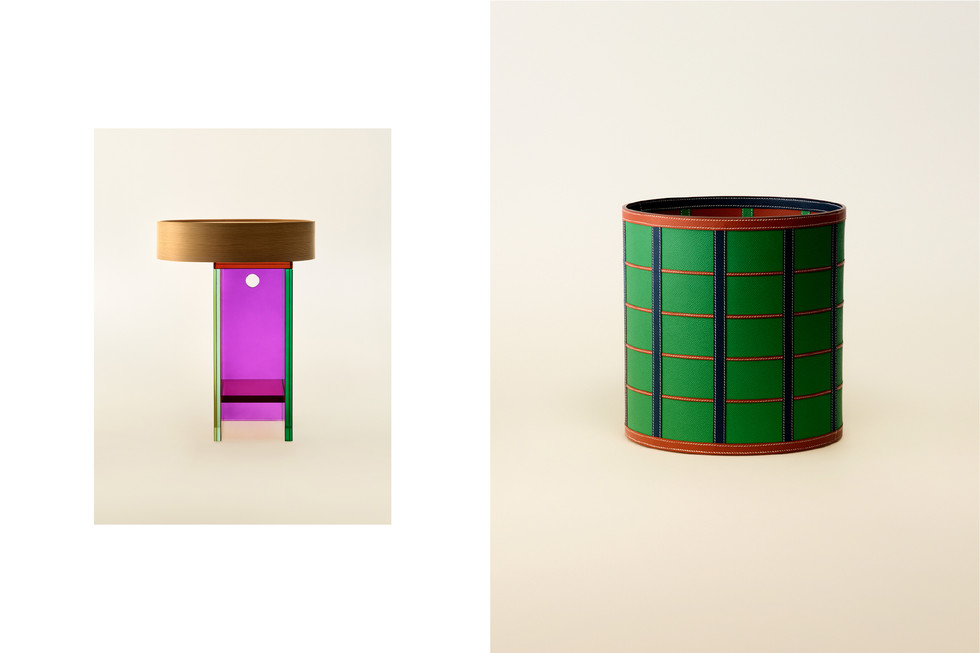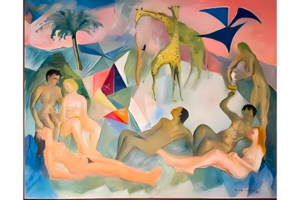Hermès at La Pelota – A Poetic Vision of Home
Written by Jahwanna Berglund by Zohra VanlerbergheHermès Illuminates Milan Design Week 2025 with a Poetic Exploration of Objects and Emotion.
During Milan Design Week 2025, Hermès made a captivating return to La Pelota, unveiling a new scenography by Charlotte Macaux Perelman and Alexis Fabry, the artistic directors of Hermès Maison. Once again, the maison invited guests into a space where design transcends function and where objects become carriers of memory, feeling, and light.
This year’s installation presents the new Collections for the Home in an ethereal setting: white, almost colorless boxes suspended in midair, casting bold, saturated hues onto the vast hall's floor. These colorful reflections, intangible, fleeting, and deeply atmospheric that create a luminous aura that gives each object a near-emotional presence. In this dreamlike world, objects do not just exist, they appear, like echoes of imagined interiors and intimate moments.
The scenography poses a subtle question: What objects do we choose to spotlight in our homes and why? Hermès encourages visitors to reconsider how we frame the items we live with, how design informs our personal narrative, and how the aura of an object can live on long after its first impression.
Highlights from the new collection include:
Mouth-blown glassware, like the striking Vase Doublé and Jug Doublé, crafted through multi-layered casing techniques.
The Side Table Pivot, a playful yet precise design by Tomás Alonso, blending lacquered glass and Japanese cedar wood.
Oversized cashmere throws adorned with gold powder and geometric appliqués, blurring the line between textile and artwork.
The new Dinner Service “En Contrepoint” by Nigel Peake, turning porcelain into rhythm and repetition.
These pieces will be available starting Autumn 2025, with select items launching in 2026.
Once again, Hermès proves that its vision of design is not defined by trends, but by emotion, craftsmanship, and timeless imagination.























